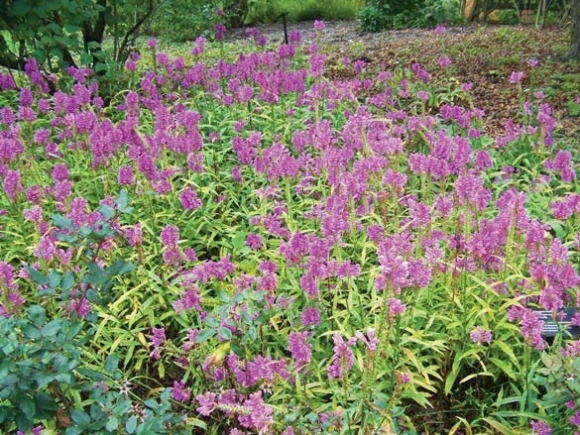Time to enjoy the bounty of your flower garden

[Before moving on to the primary subject of this column (yard gardens), I’d like to share some impressions with you of the eclipse, which (as I’m writing this) took place yesterday. For several weeks before the celestial event (as I grew weary of all the commercial hoopla), I shifted into my “Bah-humbug” mode. When asked where I was going to watch it from, I’d roll my eyes and announce: “My bedroom … it’ll be a good time to take a nice nap.”
In actuality, I had an excellent viewing platform on the upper deck of a neighbor’s house all lined up. Even as the shadow of the moon began slowly moving across the surface of the sun, I was still making smug remarks. But suddenly as the lunar body blotted out the sun for perhaps 90 seconds, if that, I shut up and just watched. There’s really no way I could write a description that would do justice to the kaleidoscopic burst of numinous colors and delicate lines. It was just fabulous.]
•••
This season of the year is a good time to enjoy the flowering and fruiting plants in our “yard garden.” Many of the more showy species are just now coming into their own. Every once in a while, it seems the perfect thing to do. Just sit down and watch the plants. It’s therapeutic.
Dominating and defining our “yard garden” between the house and the creek are some of the larger flowering shrubs: buddleia, swamp rose mallow, oak-leaved hydranger and a beautiful ornamental hydrangea that bears long cone-shaped clusters of snow white flowers.
The rosy pink flowers of the mallow are delightful because they are large — the size of small dinner plates. On the other hand, I don’t usually like ornamental hydrangeas because the flower heads are often so large they look top-heavy, awkward and artificial. But the hydrangea I purchased in Highlands during the early 1990s has compact flower clusters that look just right, even when they’re going to seed.
Related Items
Beds of garden phlox glow in the soft evening light. Observe phlox throughout the day and you’ll notice that individual flowers often shift the intensity of their colors throughout the day. Biologists call this “color morphing” and theorize that the plant is doing so in order to attract different pollinators under different light conditions.
Trumpet vine and cross vine grow on trellises that lead to the front deck or to the footbridge. The gaudy trumpet vine is attracting an unusual number of hummingbirds this year. We normally have just one or two pairs, but in the last three or four weeks there have been dozens of males, females, and immature birds zooming here and there. Sometimes a male will perch deep in the trumpet vine foliage and come storming out when another hummingbird dares to feed at a nearby blossom.
One day, we saw something that seemed incredible. A praying mantis that lived in the trumpet vine had captured a ruby-throated hummingbird. There was nothing we could do as the unfortunate bird was already half ingested.
One plant we have that’s somewhat unusual is obedient plant (Physostegia virginiana), sometimes called false dragonhead. Elizabeth rescued a few of them 30 or so years ago from a wet meadow on Toot Hollow near Bryson City that was going to be drained and converted into dry pasture. It now grows about five feet high in several beds that currently number upwards of 100 plants. They are called obedient plants because the attractive pale purple or pinkish flower heads remain bent in whichever direction you turn them. If you’re looking for a new plant to propagate next year and then sit on your deck or porch to observe, you could do a lot worse than obedient plant.
Cosmos, tall meadow rue, delphinium, Mexican subflowers, alligator grass, cardinal flower, and so forth. Just typing their names makes me feel better.
(George Ellison is a naturalist and writer. He can be reached at This email address is being protected from spambots. You need JavaScript enabled to view it..)









